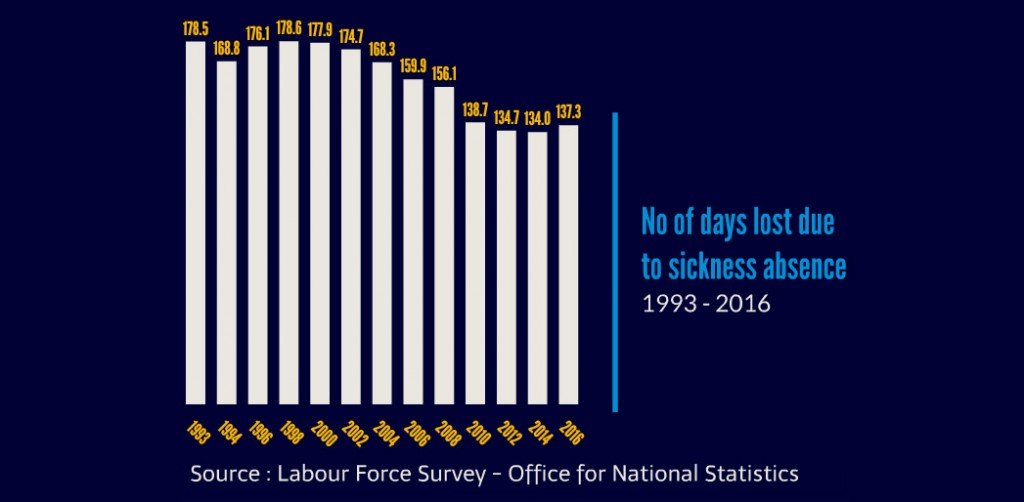Recently released Office for National Statistics (ONS) figures show the average number of working days lost for sickness in 2016 fell to its lowest level since the data records began.

In 1993 the average number of sickness days p.a. stood at 7.2 days per worker; in 2011 the average dropped to 4.5 days, further reducing to 4.3 in 2016. Some industry commentators say the figures reflect a trend of people increasingly coming into work when unwell, prompting TUC General Secretary Frances O’Grady to say that it was a myth that workers frequently throw sickies. “We are really a nation of mucus troopers, with people more likely to go to work when ill than stay at home when well,” she said.
Minor illnesses such as coughs and colds were the principle cause of absence, responsible for 34m lost working days, around 25% of the total. Musculoskeletal problems were the second most common cause, accounting for 30.8m sick days, or 22% of the total. However the 2016 overall figures showed a continued increase in the frequency of mental health conditions including stress, depression and anxiety. These resulted in 15.8m days lost, or 11.5% of the total.
According to a survey by the Liverpool Echo, researchers found staff are much more likely to lie if they need time off for mental health issues than they are for physical health problems. Less than half the workforce would tell their line manager they were calling in sick because of stress, anxiety or depression, according to the survey.
By contrast, more than 80% would feel comfortable asking for time off because of flu, being injured in an accident or back pain. People who work for small and medium-sized businesses are particularly likely to expect not to be believed, fear being judged or simply want to keep mental health issues private.